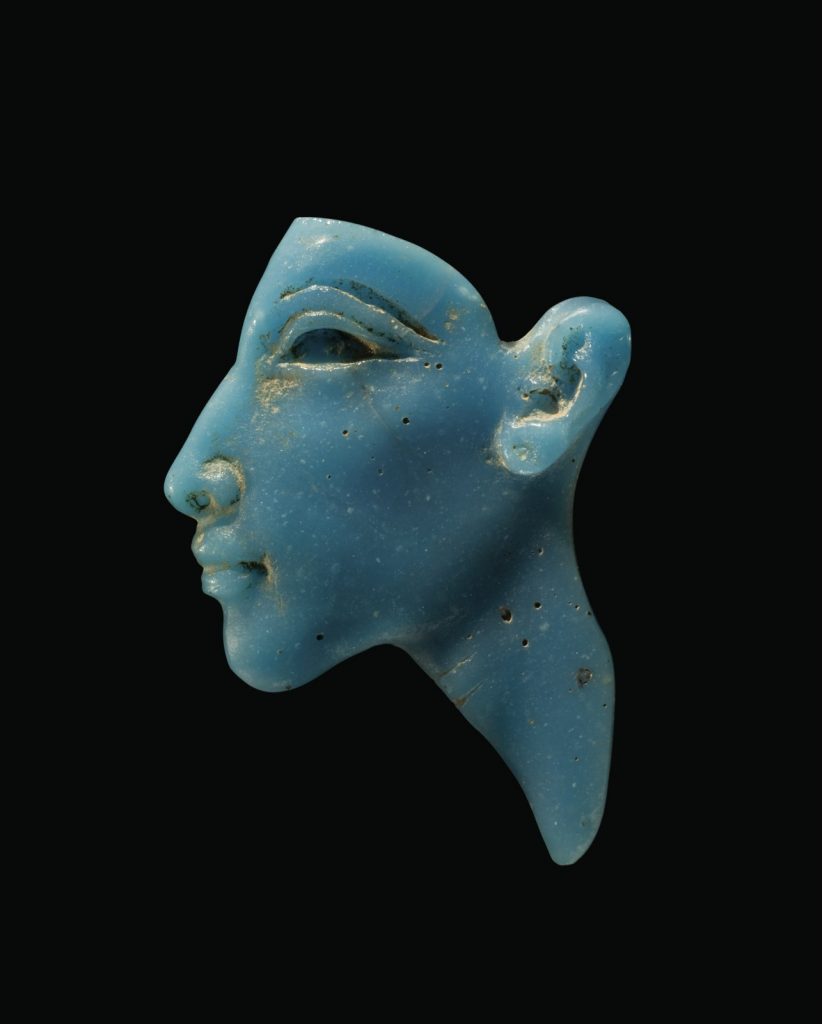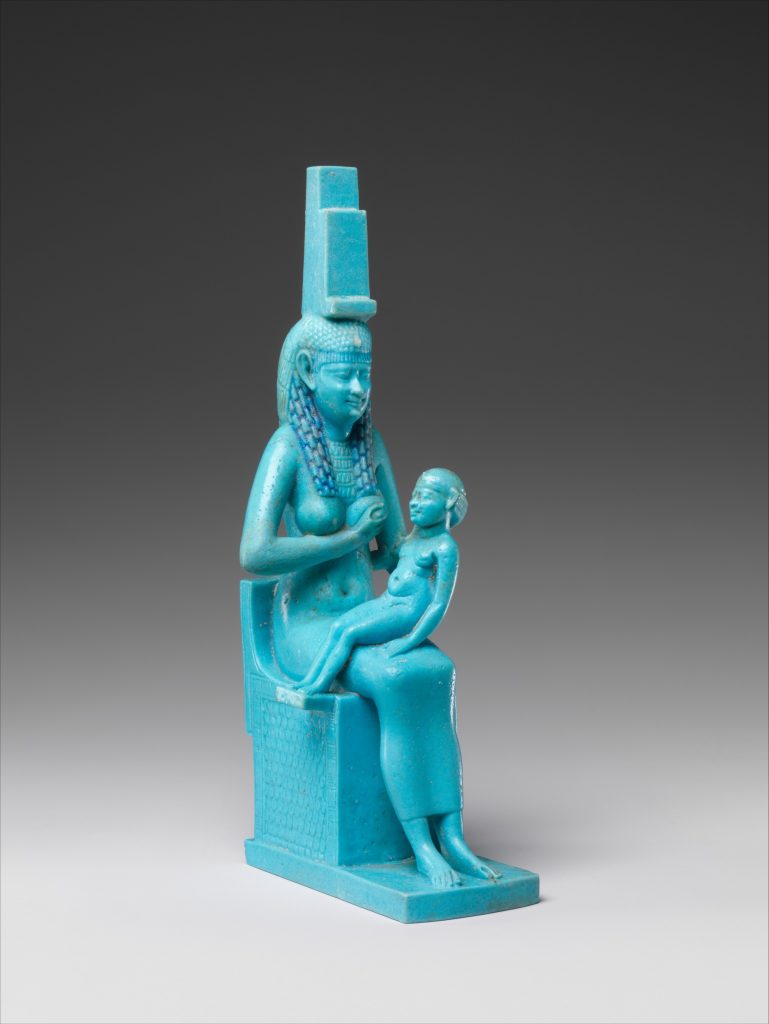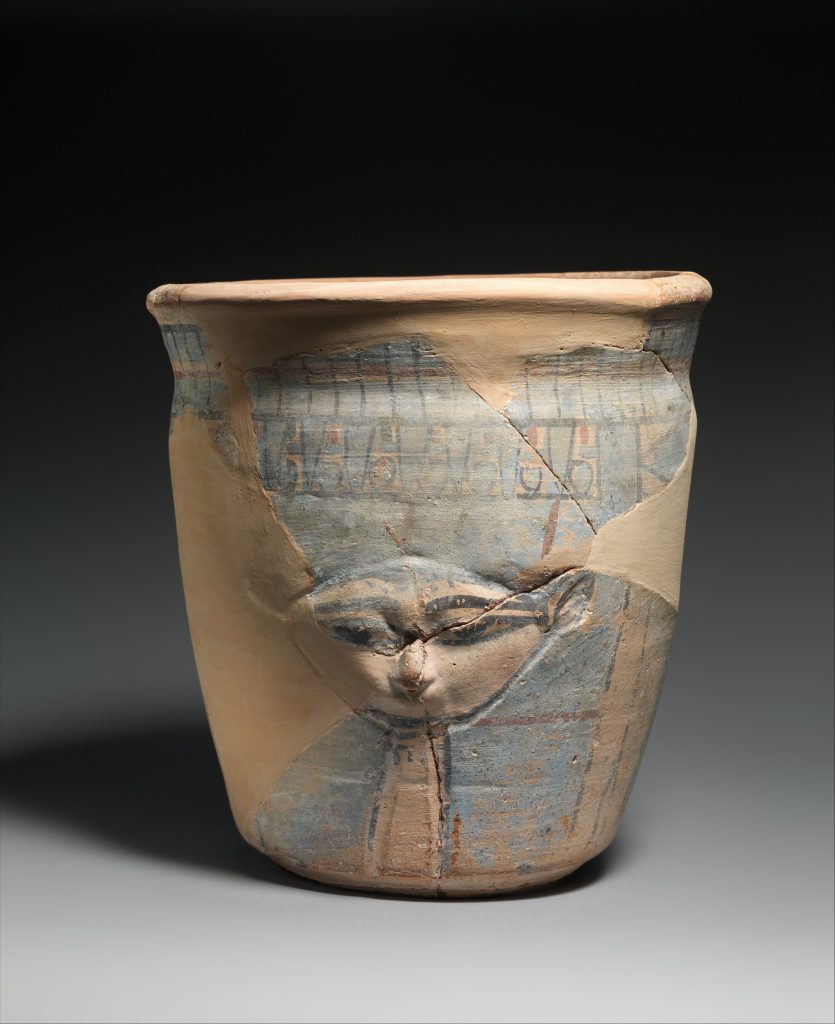In depictions of royalty throughout human history, few are portrayed with blue faces. Why would anyone create a work of art showing their ruler in such a strange colour? Surely they’d get punished for ruining their majesty’s image and making a mockery of them, right? But that was is not the case in Ancient Egypt. Blue was an important design element of Egyptian art, and was utilized in specific ways.
Amun and the colour blue
While all gods were all depicted with blue hair, Amun was the only one that was consistently shown to have a blue face. Amun was the god of creation, and he ruled over all beings– including other gods. That made Amun the most powerful of the gods, and blue was associated with his powers of life and creation. Some artwork of pharaohs depicted them with blue faces and hair, because they were associated with Amun and pharaohs were considered gods on earth.

https://www.cmog.org/artwork/portrait-inlay-pharaoh-akhenaten
why was blue important?
One of many reasons blue was important was because the pigment was very expensive to make. Especially the specific shade that was referred to as “Egyptian Blue”, or Irtiu. It was made of heated quartz, malachite, and calcium carbonate. Another reason was because the Nile River provided the Egyptians with many of their basic needs. It supported their transportation, agriculture, and provided them fresh water and fish to eat. The river sustained their lives and thus the colour blue reflected the waters of the Nile, and came to symbolize life as well. Blue was also important because faience, a material made of crushed quartz, was often a blue colour and the material was said to be “magical” and “filled with the undying shimmer of the sun, and imbued with the powers of rebirth” (Riccardelli 2007).

https://www.metmuseum.org/art/collection/search/548310.
where was blue utilized?
Although blue carried very strong symbolism and it was very expensive to make, it was not limited only to noble artwork. There were many ceramics, beads, and amulets that used blue. Faience was a cheaper and more accessible way for peasants to have the sought after colour. Lapis lazuli, on the other hand, was the most precious stone to Egyptians and was used in pieces meant for royalty. Lapis lazuli was often paired with gold to make jewellery and various protection amulets, such as the heart scarab. It was also used to decorate the tombs of pharaohs.

Blue was a vital part of Egyptian culture, and it was used in everyday items all the way up to the most expensive and lavish. Therefore, the blue faces of pharaohs was not a mockery, but a way of showing them the utmost respect. It associated them with life and creation, and the all powerful god Amun. Blue conveyed their elite status as royalty, and adorned them even in death.
